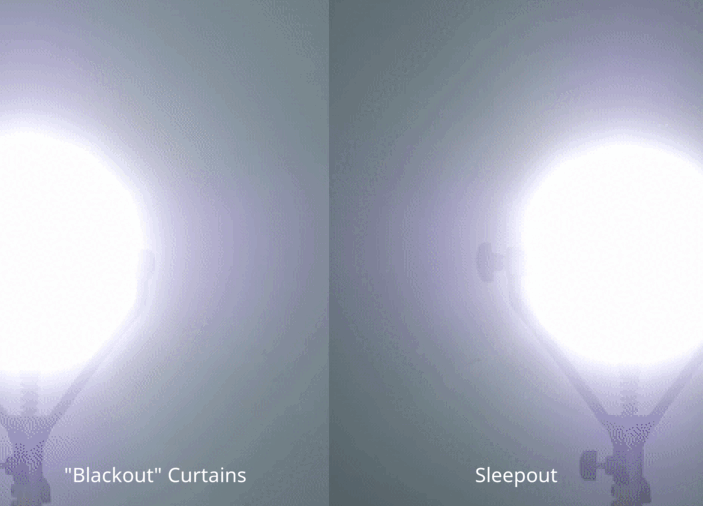Dream feeding is a remarkable technique that can provide numerous benefits for both parents and their babies, making it an invaluable tool for new parents looking to establish a healthy routine for their little one. We'll explore the practical aspects of dream feeding, such as swaddling and burping during night feedings, providing you with the knowledge and techniques needed to make the most of this helpful practice.
Understanding The Purpose of Dream Feeding
At first glance, it may seem counterintuitive that feeding a baby while they're asleep could actually improve their sleep patterns. Here are some of the benefits of dream feeding your baby:
- Maintains steady blood sugar levels: Dream feeding ensures that your baby remains nourished throughout the night, reducing periods of hunger and supporting extended sleep stretches.
- Promotes better sleep patterns: This method aids in establishing a healthy and consistent sleep routine for your baby from early stages of life.
- Improves parents' sleep: Aligning your baby's longer sleep periods with your own schedule results in improved sleep for parents, offering much-needed rest and recovery.
Embracing dream feeding can optimize your infant's sleep and nutrition while also promoting better rest for parents.
The Step-by-Step Guide to Dream Feeding Your Baby
Dream feeding is an effective method that promotes better sleep and nourishment for your baby while also improving sleep quality for parents. Here's a step-by-step guide to introducing dream feeding to your baby:
-
Choose the Best Time: The ideal time for dream feeding is usually late in the evening, right before you plan on going to bed. This timing helps align your baby's longest stretch of sleep with your own.
-
Create a Soothing Environment: Make sure to create a calm and comforting environment to minimize sleep disruptions. This includes dimming the lights and keeping noise to a minimum. Investing in high-quality blackout curtains can also help by blocking out any external light, noise and drafts.
-
Gently Rouse Your Baby: Without fully waking your baby, gently rouse them for feeding. This can be done by picking them up softly or simply adjusting their position for breastfeeding.
-
Feed Your Baby: Start feeding your baby, either with a bottle or breastfeeding. Ensure it's done gently to keep your baby in a semi-asleep state.
-
Settle Your Baby Back: Once the feeding is done, carefully settle your baby back into their crib or bassinet. Try to do this smoothly to avoid fully waking them up.
-
Adapt as Needed: Adjust the dream feeding schedule according to your baby's needs and responses. Some babies may take to it quickly, while others may need a more gradual introduction.
-
Monitor and Adjust: Keep a close eye on how well your baby is adjusting to dream feeding. If you notice any discomfort or if your baby seems too disturbed, consider seeking advice from your pediatrician.
When to Start Dream Feeding a Newborn
It's generally considered safe to begin dream feeding when a baby is around two weeks old, as they've had some time to adapt to life outside the womb and start establishing a routine. During this time, they will have begun to develop a feeding pattern, making it easier for parents to introduce dream feeds without causing too much disruption.
It's essential to observe your baby's cues to determine if they're ready for dream feeding. Signs that your baby may be ready for dream feeding include waking up around the same time each night, which may indicate that they're hungry, or showing hunger cues like rooting or sucking on their hands.
Picking The Ideal Time of Night for a Dream Feed
The ideal time for dream feeds can vary greatly between babies, but it's typically best to schedule them around 3-4 hours after your baby's bedtime. Various factors, such as your baby's age, weight, and individual sleep patterns, can influence the timing of dream feeds, and it's essential to adapt dream feed schedules according to your baby's unique needs. Continually monitor how your baby responds to the feedings and adjust the schedule accordingly to ensure that they're getting the maximum benefit from this practice.
How Long to Dream Feed a Newborn
The average duration of dream feeds for newborns can range anywhere from 10 to 20 minutes, but this can vary depending on the baby and the feeding method (breastfeeding or bottle-feeding). Factors that influence the length of dream feeds include the baby's hunger level, how efficiently they feed, and their ability to stay asleep during the process.
Happy Sleeping, For You and Your Baby.
Creating a soothing sleep environment is essential for successful dream feeding, and investing in high-quality blackout curtains can make a significant difference in your baby's sleep quality. These curtains effectively block out external light, ensuring that the baby's sleep environment remains consistently dark and conducive to restful, uninterrupted sleep. Consider adding the most recommended blackout curtain by sleep specialists in North America! Use the code WELCOME10 for $10 off.







